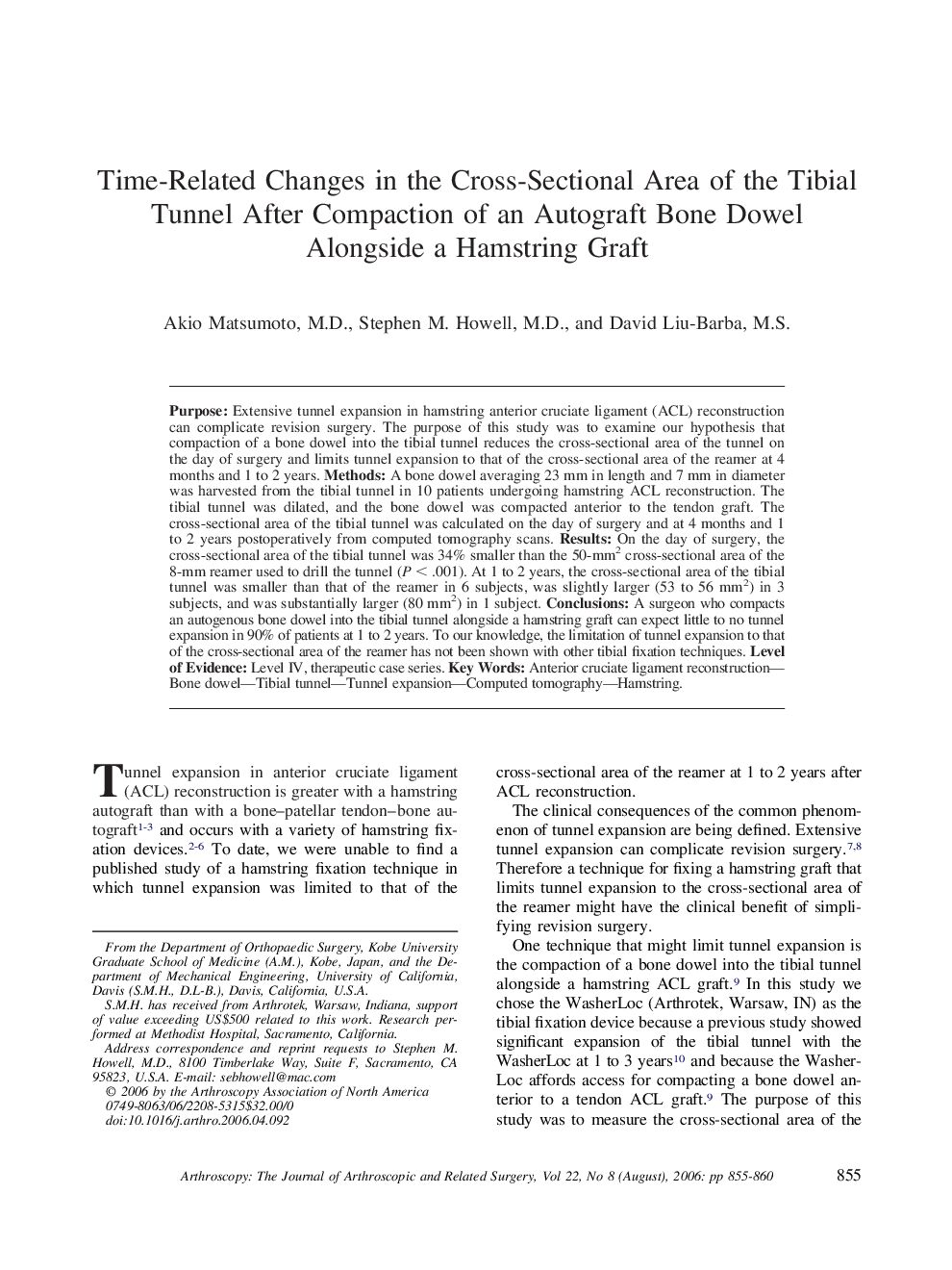| Article ID | Journal | Published Year | Pages | File Type |
|---|---|---|---|---|
| 4047173 | Arthroscopy: The Journal of Arthroscopic & Related Surgery | 2006 | 6 Pages |
Purpose: Extensive tunnel expansion in hamstring anterior cruciate ligament (ACL) reconstruction can complicate revision surgery. The purpose of this study was to examine our hypothesis that compaction of a bone dowel into the tibial tunnel reduces the cross-sectional area of the tunnel on the day of surgery and limits tunnel expansion to that of the cross-sectional area of the reamer at 4 months and 1 to 2 years. Methods: A bone dowel averaging 23 mm in length and 7 mm in diameter was harvested from the tibial tunnel in 10 patients undergoing hamstring ACL reconstruction. The tibial tunnel was dilated, and the bone dowel was compacted anterior to the tendon graft. The cross-sectional area of the tibial tunnel was calculated on the day of surgery and at 4 months and 1 to 2 years postoperatively from computed tomography scans. Results: On the day of surgery, the cross-sectional area of the tibial tunnel was 34% smaller than the 50-mm2 cross-sectional area of the 8-mm reamer used to drill the tunnel (P < .001). At 1 to 2 years, the cross-sectional area of the tibial tunnel was smaller than that of the reamer in 6 subjects, was slightly larger (53 to 56 mm2) in 3 subjects, and was substantially larger (80 mm2) in 1 subject. Conclusions: A surgeon who compacts an autogenous bone dowel into the tibial tunnel alongside a hamstring graft can expect little to no tunnel expansion in 90% of patients at 1 to 2 years. To our knowledge, the limitation of tunnel expansion to that of the cross-sectional area of the reamer has not been shown with other tibial fixation techniques. Level of Evidence: Level IV, therapeutic case series.
